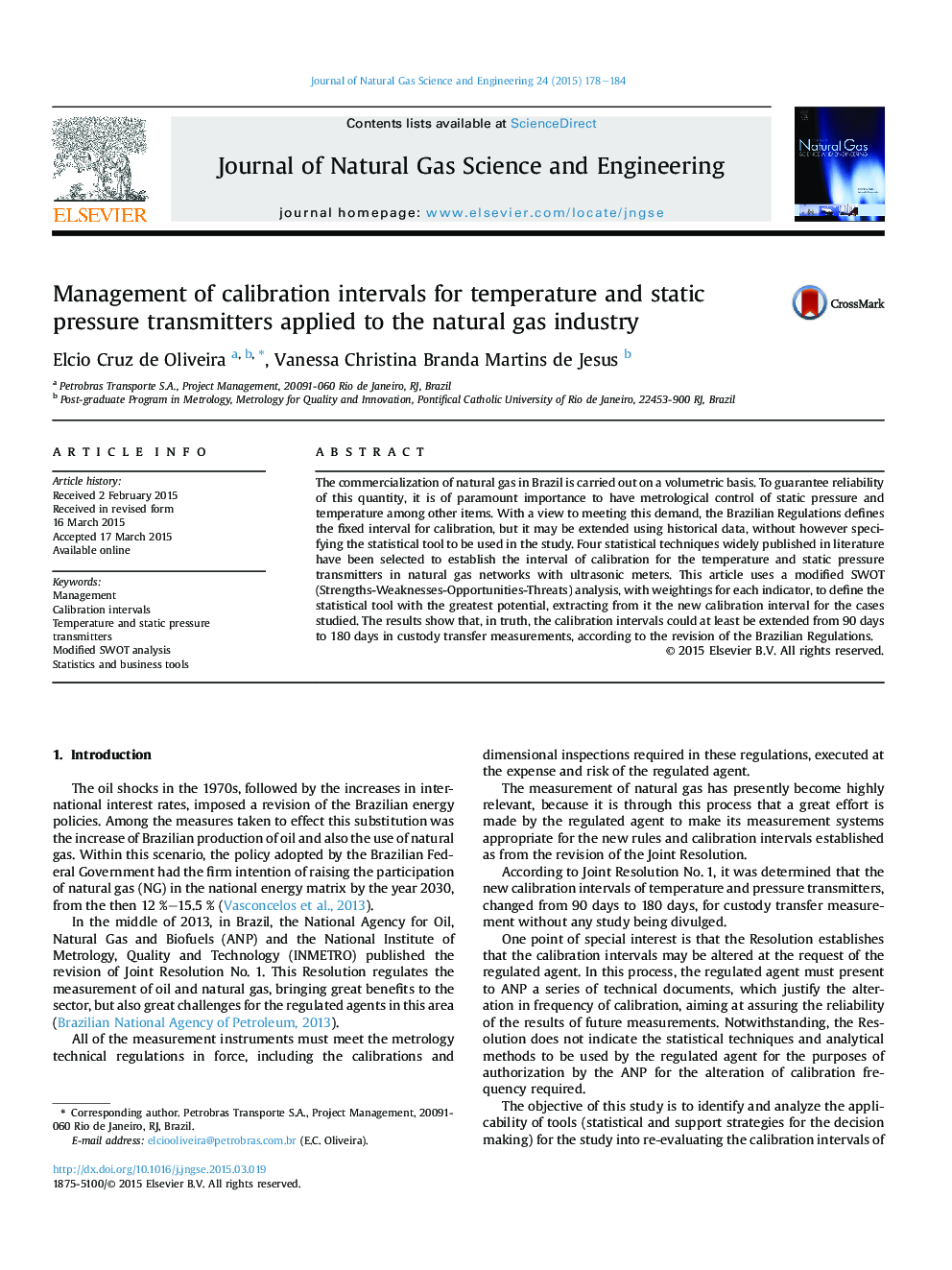| Article ID | Journal | Published Year | Pages | File Type |
|---|---|---|---|---|
| 1757407 | Journal of Natural Gas Science and Engineering | 2015 | 7 Pages |
Abstract
The commercialization of natural gas in Brazil is carried out on a volumetric basis. To guarantee reliability of this quantity, it is of paramount importance to have metrological control of static pressure and temperature among other items. With a view to meeting this demand, the Brazilian Regulations defines the fixed interval for calibration, but it may be extended using historical data, without however specifying the statistical tool to be used in the study. Four statistical techniques widely published in literature have been selected to establish the interval of calibration for the temperature and static pressure transmitters in natural gas networks with ultrasonic meters. This article uses a modified SWOT (Strengths-Weaknesses-Opportunities-Threats) analysis, with weightings for each indicator, to define the statistical tool with the greatest potential, extracting from it the new calibration interval for the cases studied. The results show that, in truth, the calibration intervals could at least be extended from 90 days to 180 days in custody transfer measurements, according to the revision of the Brazilian Regulations.
Keywords
Related Topics
Physical Sciences and Engineering
Earth and Planetary Sciences
Earth and Planetary Sciences (General)
Authors
Elcio Cruz de Oliveira, Vanessa Christina Branda Martins de Jesus,
